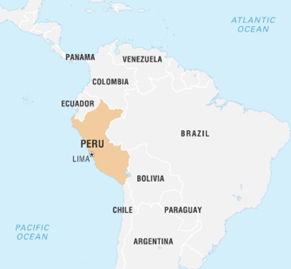TAG: GS 2: POLITY
THE CONTEXT: Indigenous rights NGO Survival International recently released rare pictures of the Mashco Piro tribespeople, one of the world’s 100-odd uncontacted tribes.
EXPLANATION:
Mashco Piro Tribe
- The Mashco Piro are among those tribes without contact with the rest of the world.
- They live within the dense jungles of southeastern Peru in Amazonian.
- It is estimated that the population of this tribe exceeds seven hundred and fifty persons.
- According to various studies, these people are thought to be the largest community living independently from others.
- These nomadic hunter-gatherers inhabit the Madre de Dios Region near Peru’s borders with Brazil and Bolivia.
- Peru’s government has forbidden all contact with the Mashco Piro, fearing the spread of disease among the population that lacks immunity.
- The tribe is very reclusive, only occasionally contacting the natives but contacting Yine people.
- Much of what is known about the Mashco Piro comes from Yine accounts.

Logging Threats and Territorial Invasion
- 2002 Peru established the Madre de Dios Territorial Reserve to safeguard the Mashco Piro’s territory.
- Nonetheless, a sizable portion of their traditional lands have been set aside for logging concessions and are located outside of this reserve.
- Canales Tahuamanu, a well-known logging company, has been granted 53,000 hectares to harvest valuable timber, such as mahogany and cedar.
- The company has been putting more pressure on the Mashco Piro to defend these logging rights aggressively, with support from the Forest Stewardship Council (FSC).
- Through the Yine people, the Mashco Piro have voiced their displeasure with the encroachment.
- They speak of attacks and mounting pressure from logging operations, which reminds them of past territorial invasions that occurred during the 1880s rubber boom.
- The Mashco Piro were forcibly relocated, forced into slavery, and many of them perished during that time.
- The survivors, seeking solitude, withdrew even farther upstream on the Manu River.
- But since the tribe has nowhere to hide due to the logging industry’s resurgence, sightings of them have increased as they travel in search of food and safety.
Humanitarian Crisis in the Making
- The recent photographs showing over 50 Mashco Piro individuals near logging concessions underscore the imminent threat to their survival.
- The director of Survival International described the situation as a “humanitarian disaster in the making.”
- The increased visibility of the Mashco Piro signifies their desperation as they flee from the relentless advance of loggers.
- This displacement mirrors the tribe’s historical suffering but with fewer options for sanctuary.
Cross-Border Implications
- The plight of the Mashco Piro extends beyond Peru’s borders.
- There have been sightings of the tribe in Brazil, indicating their cross-border flight from logging activities.
- They flee from loggers on the Peruvian side. They are a people with no peace and are restless because they are always on the run.
- This transboundary movement complicates efforts to protect the tribe and underscores the broader regional impact of logging in the Amazon.

